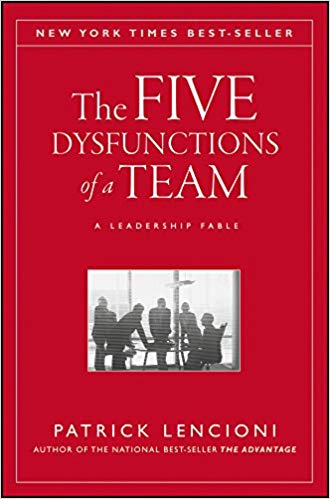

This article is an excerpt from the Shortform summary of "The Five Dysfunctions of a Team" by Patrick Lencioni. Shortform has the world's best summaries of books you should be reading.
Like this article? Sign up for a free trial here .
Many teams have the dysfunction of trust, where they feel uncomfortable with showing each other vulnerability. If you’re on a team with this dysfunction, you might want to know how to build trust in a team.
As we learned in Dysfunction One: Absence of Trust, trust is the quality of being able to feel safe and unjudged by one’s teammates. It is the ability to be vulnerable with one another (by being willing to admit mistakes and reveal weaknesses).
Trust is the foundation of team dynamics – in an absence of trust, people will feel unable to disagree in a healthy way, which means they won’t be able to build plans with total buy-in, which means people will feel lack of responsibility for results.
So how do you build trust in a team at work?
The general theme to fixing this is to provide structured environments for team members to exchange feedback, without threat of retaliation. Once team members get used to being vulnerable, they can do it freely in less structured environments.
Here are specific strategies to accomplish this:
Trust Building Method 1: Sharing Personal Histories
This exercise on how to build trust in a team requires teammates to answer personal questions about themselves and reveal some basic details about their lives (like how many siblings they have, where they went to school, and their hobbies). By revealing even these innocuous details to each other, teams can go a long way toward breaking down the barriers that inhibit trust.
It is easier to trust someone and be vulnerable in front of them when you see them as a complete person, with their own unique life story, anxieties, and aspirations. This is how you build personal trust in a team.
Trust Building Method 2: Team Effectiveness Exercise
In this method to build trust in a team, every member of the team identifies the most important contribution and the biggest area for improvement for every other member of the team. All team members share their thoughts, focusing on one person at a time, usually starting with the leader.
In a trustless environment, this could be dangerous, but the structure of the exercise makes it safer than usual to identify weaknesses. And on the positive side, everyone gets to see the talent and experience of their colleagues. This also breeds self-confidence, fosters assertiveness (since teammates can act knowing that they are respected and admired by the group), and checks egos (since everyone is laying their weaknesses on the table in front of their teammates).
Trust Building Method 3: Personality and Behavior Preference Profiles
These trust-building exercises are diagnostic tools that provide behavioral and cognitive descriptions and insights into individual behavior. They can be useful in identifying how people think, speak, and act. Examples include the Myers Briggs Type Indicator (MBTI), Big Five Personality Test, Extroversion Introversion Test, and 16 Personalities Test.
Once you understand that someone’s psychology is wired a certain way, it becomes easier to interact with them, and see their behavior through a new lens. You can empathize with how they feel and how they behave. This is how to build trust in a team.
These should be approached with some caution: people are far more complicated than a score on a test, and the tests shouldn’t be used as a guide for how to deal with individuals in all situations. They should always be administered and the results explained by a licensed, third-party professional.
Trust Building Method 4: 360-Degree Feedback
In this trust building exercise, teammates issue specific judgements on their peers’ performance and engage in multiple rounds of constructive criticism. It’s called 360-degree because each person receives feedback from their supervisor, colleagues, subordinates, and from themselves.
As a warning, this exercise should only be used as a developmental tool, separate from the formal performance evaluation process. Otherwise, politics will sneak in.
Trust Building Method 5: The Leader’s Role
When figuring out how to build trust in a team, leaders must demonstrate their own vulnerability by being willing to lose face in front of the team…
———End of Preview———

Like what you just read? Read the rest of the world's best summary of Patrick Lencioni's "Five Dysfunctions of a Team" at Shortform . Learn the book's critical concepts in 20 minutes or less .
Here's what you'll find in our full Five Dysfunctions summary :
- What the Five Dysfunctions are
- Why absence of trust is the fundamental dysfunction
- How to get people to argue the right way
- Strategies and exercises to overcome each dysfunction






